
Where am I?
WOW Moment for candidates
The recruitment and selection field wished to transform the way offer letters were presented to approved candidates in a selection process.
This opportunity had already been mapped by Kenoby's Business team, however there was little knowledge on how to transform the offer letter in an automated feature inside the system.
The offer is the touchpoint that issues the highest expectations and WOW Moment in the selection process for both the candidate and the recruiter.
This project was one of my first initiatives when I joined Kenoby in 2018.
This opportunity had already been mapped by Kenoby's Business team, however there was little knowledge on how to transform the offer letter in an automated feature inside the system.
The offer is the touchpoint that issues the highest expectations and WOW Moment in the selection process for both the candidate and the recruiter.
This project was one of my first initiatives when I joined Kenoby in 2018.
Problem
The recruiter has a salary budget that was approved in the beginning of the job creation, in a process called Job Requirement. This process is done by a Hiring Manager and is approved by the Jobs and Salaries department.
The offer letter is the last touchpoint between recruiter and candidate, which might create a long negotiation and communication between both.
In companies where there is no Applicant Tracking System (ATS), this communication is made manually and a physical document is signed.
The offer letter is the last touchpoint between recruiter and candidate, which might create a long negotiation and communication between both.
In companies where there is no Applicant Tracking System (ATS), this communication is made manually and a physical document is signed.
Constraints
As this document was a contract signed between company and candidate, there was a great deal of worry about legal and financial complications, as well as how to deal with possible typing errors.
When the candidate approves and signs the offer letter, the company is legally binded to comply with benefits, salary and everything agreed in the document.
Any mistake in said document can negatively impact both the candidate and the Jobs and Salaries department.
When the candidate approves and signs the offer letter, the company is legally binded to comply with benefits, salary and everything agreed in the document.
Any mistake in said document can negatively impact both the candidate and the Jobs and Salaries department.
Audience
Kenoby's main customers are B2B enterprises, with high hiring rates and a large number of employees.
Said companies have an approval process, and a variety of users interact with the hiring functionality, such as:
• Recruiter
• Business partner
• Jobs and Salaries department
• Hiring Manager
• Candidates
• Human Resources department
Said companies have an approval process, and a variety of users interact with the hiring functionality, such as:
• Recruiter
• Business partner
• Jobs and Salaries department
• Hiring Manager
• Candidates
• Human Resources department
My Role
Create an end-to-end design process, that includes:
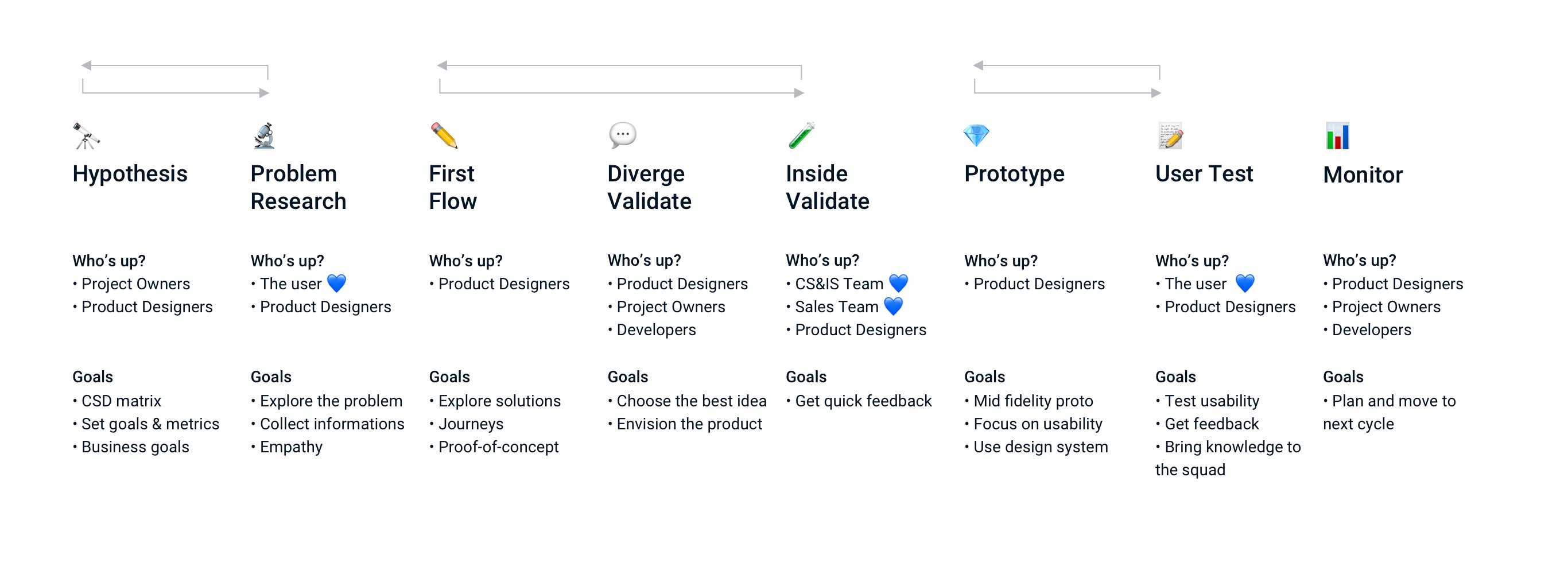
Research
I initiated the exploratory research with HR teams I was connected to. At the time we worked at Cubo Itaú Coworking, with several other startups, so I took the opportunity to talk to as many tech companies as possible, as well as companies outside the coworking.
To expand the research I created a Typeform and sent it to Kenoby's clients database, focusing on companies with a more "traditional" approach.
The result of the Typeform research showed these companies withstanded this kind of innovative change.
Our main concern was with the compliance management and the risk of making mistakes in the process, which might have a negative financial impact in the business.
This discovery was fundamental to better design the feature.
To expand the research I created a Typeform and sent it to Kenoby's clients database, focusing on companies with a more "traditional" approach.
The result of the Typeform research showed these companies withstanded this kind of innovative change.
Our main concern was with the compliance management and the risk of making mistakes in the process, which might have a negative financial impact in the business.
This discovery was fundamental to better design the feature.
Analyzing competitors and references
To expand our knowledge I researched for tools that provide communication and approval features:
• Lever HR
• Docusign
• Contractor
• Conta Azul
• Lever HR
• Docusign
• Contractor
• Conta Azul
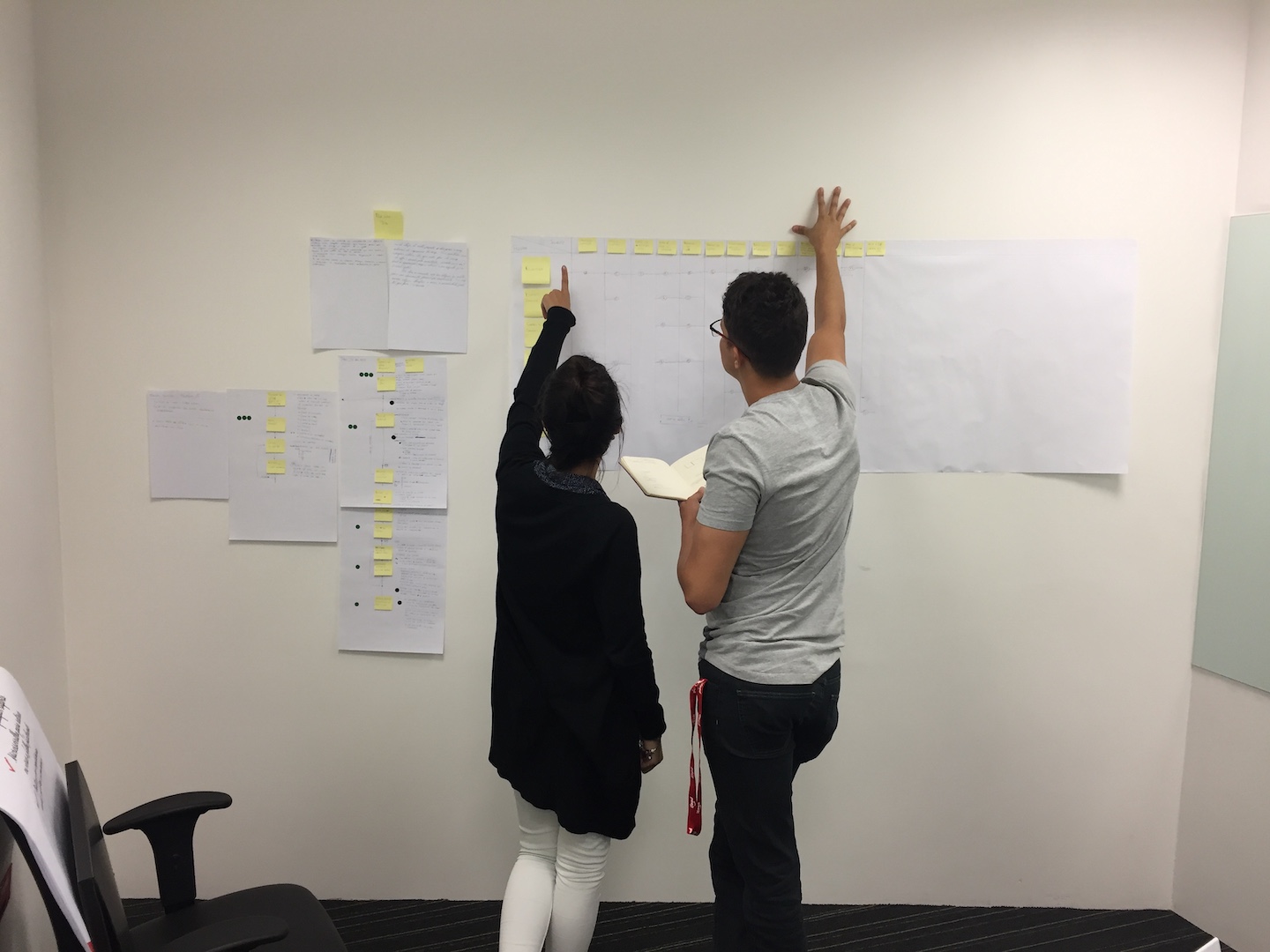
Feature Mapping
The exploratory research served its purpose to map risks and legal challenges we could face with the feature.
In order to have a better understanding of real-life recruiting and candidate experience, I developed a co-creation dynamic based on a few design sprint activities.
Kenoby users were invited to participate of this dynamic in person.
At the end of the dynamic I had a clearer view of how the process works and the several interactions we had to prototype.
In order to have a better understanding of real-life recruiting and candidate experience, I developed a co-creation dynamic based on a few design sprint activities.
Kenoby users were invited to participate of this dynamic in person.
At the end of the dynamic I had a clearer view of how the process works and the several interactions we had to prototype.
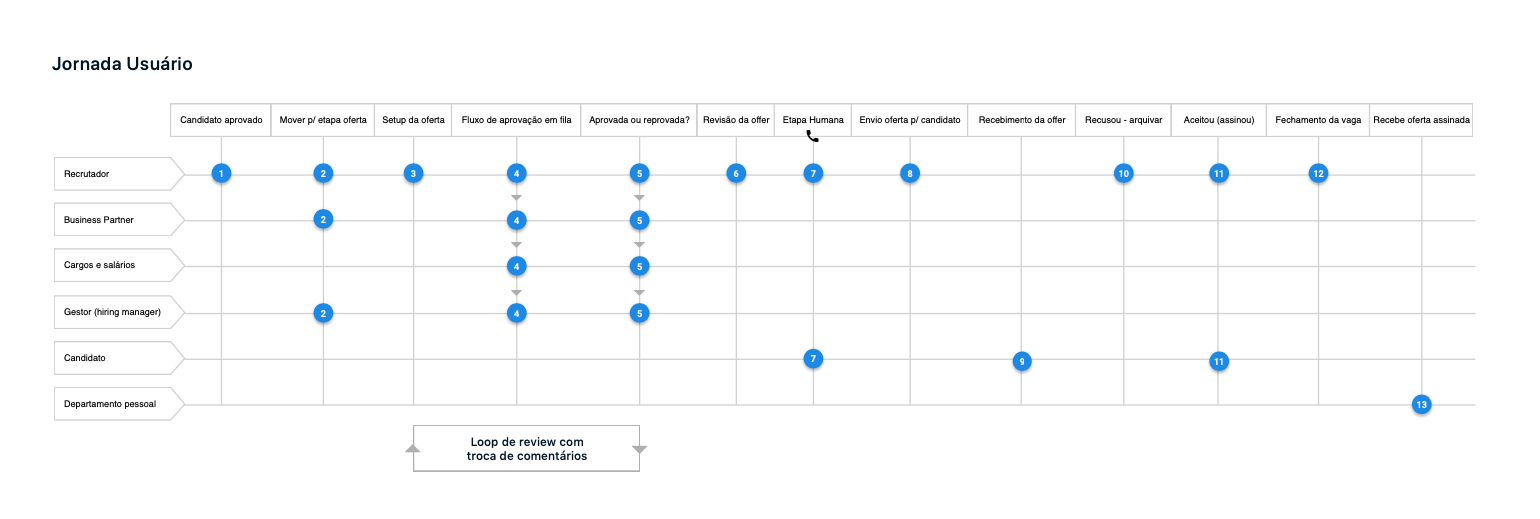
Fast prototyping and inside validate
The first prototyping task was made to figure out the design scope:
• Offer template management
• Create and send offer for approval for the Jobs and Salaries department
• Internal offer approving flow
• Offer review and communication with the candidate
• Candidate approval flow and negotiation
• End of hiring process
With this path defined, I designed several low-fidelity prototypes to stress ideas and to be able to concretize the feature inside our current product.
I also asked several Kenoby clients to validate the feature.
The benefit of this process is how quickly and efficiently I was able to simplify the initial flow of the feature.
• Offer template management
• Create and send offer for approval for the Jobs and Salaries department
• Internal offer approving flow
• Offer review and communication with the candidate
• Candidate approval flow and negotiation
• End of hiring process
With this path defined, I designed several low-fidelity prototypes to stress ideas and to be able to concretize the feature inside our current product.
I also asked several Kenoby clients to validate the feature.
The benefit of this process is how quickly and efficiently I was able to simplify the initial flow of the feature.
High-fidelity prototyping
The prototypes were made following the scope, highly focused on the tasks that had to be accomplished by the diverse user profiles identified on the usability tests.
Offer templates management
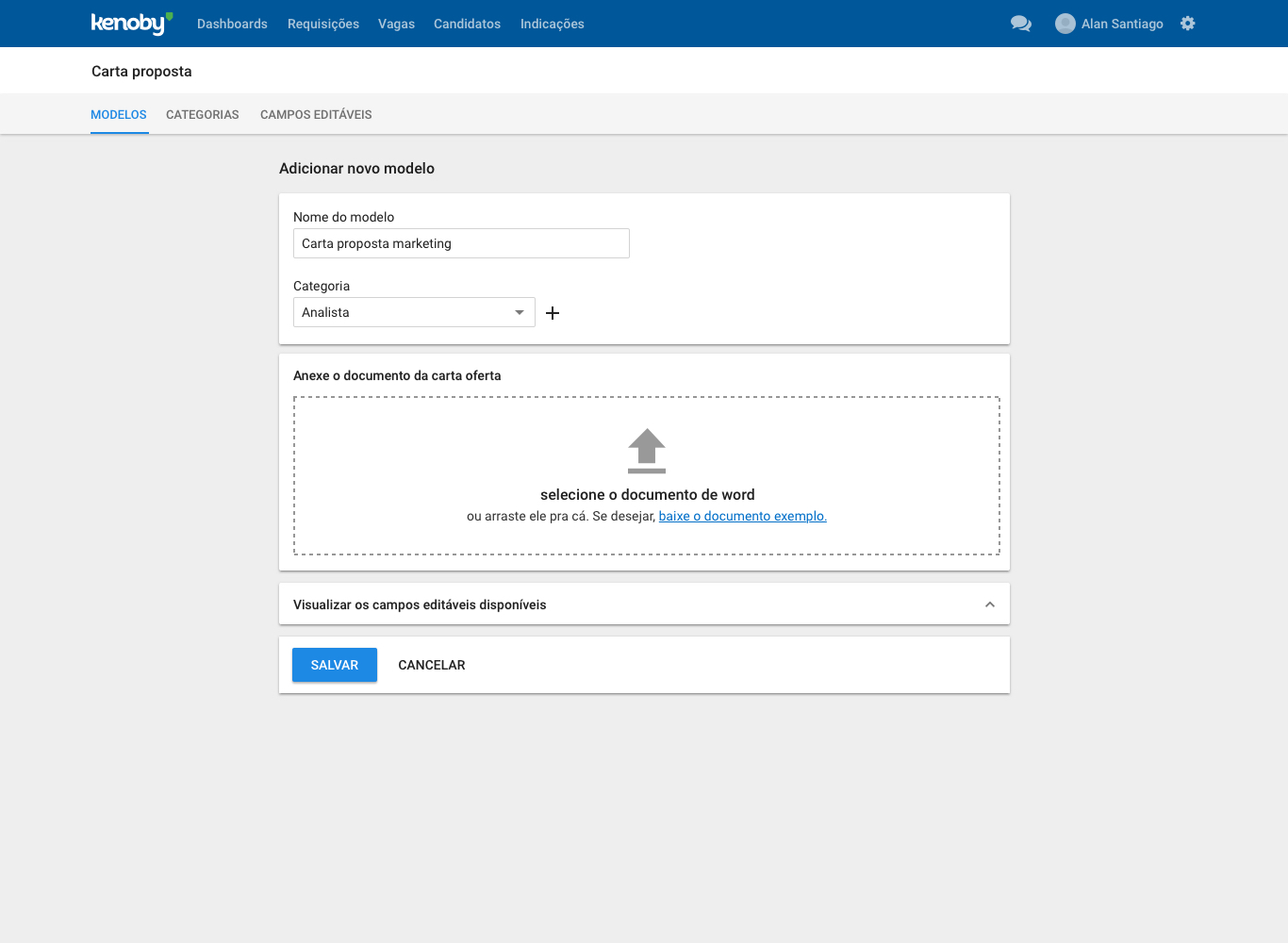
Internal offer approving flow
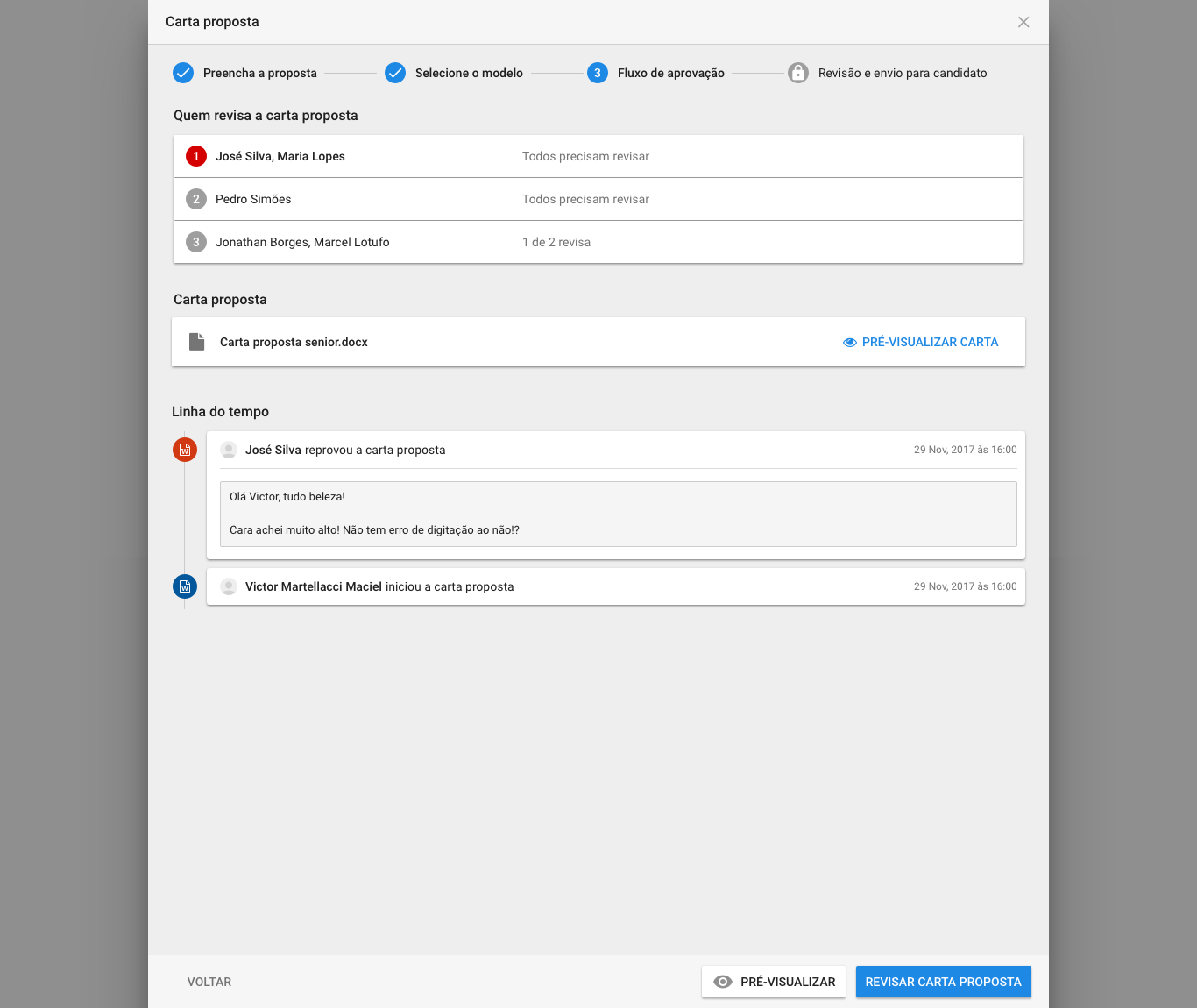
Offer review and communication with the candidate
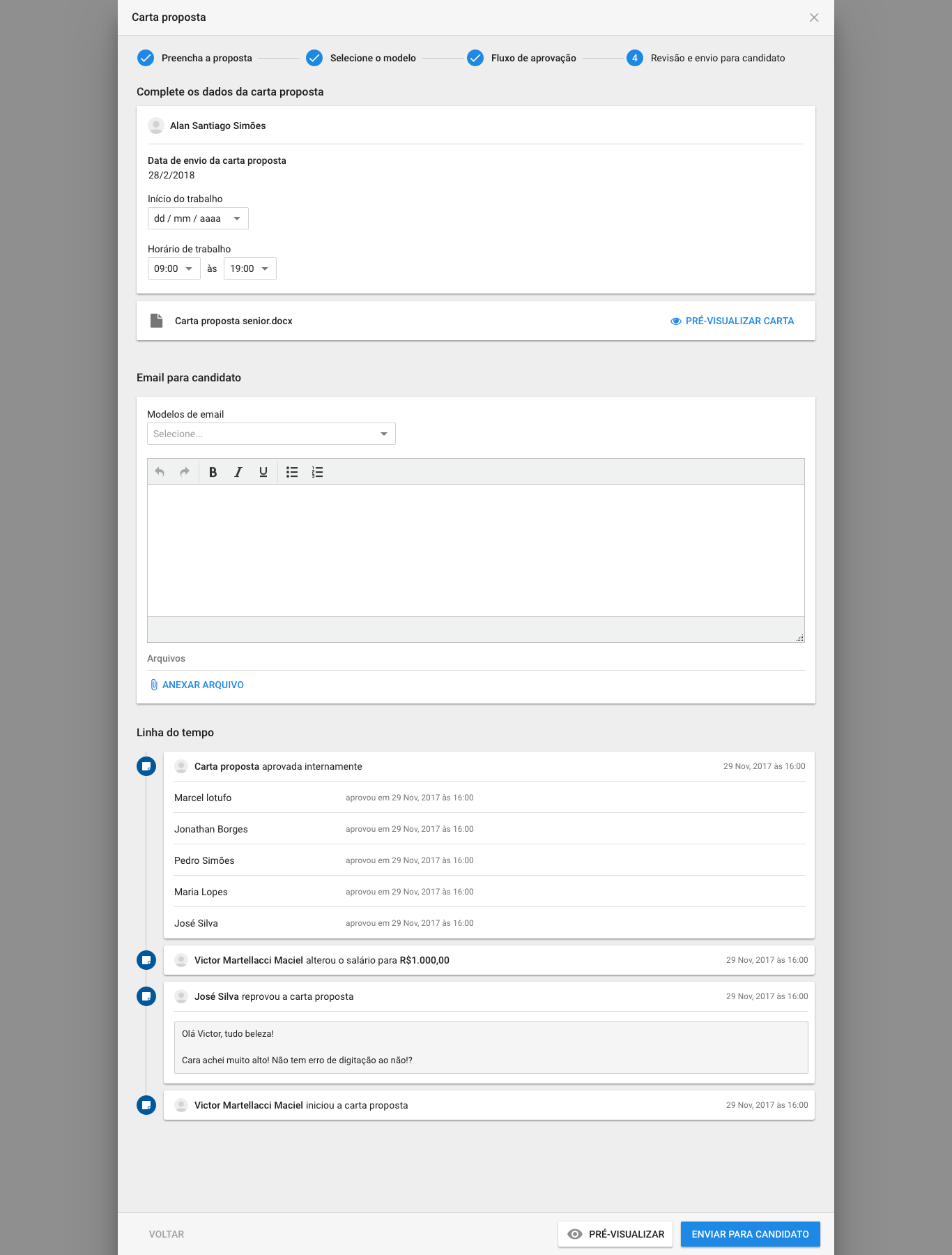
Candidate approval flow and negotiation
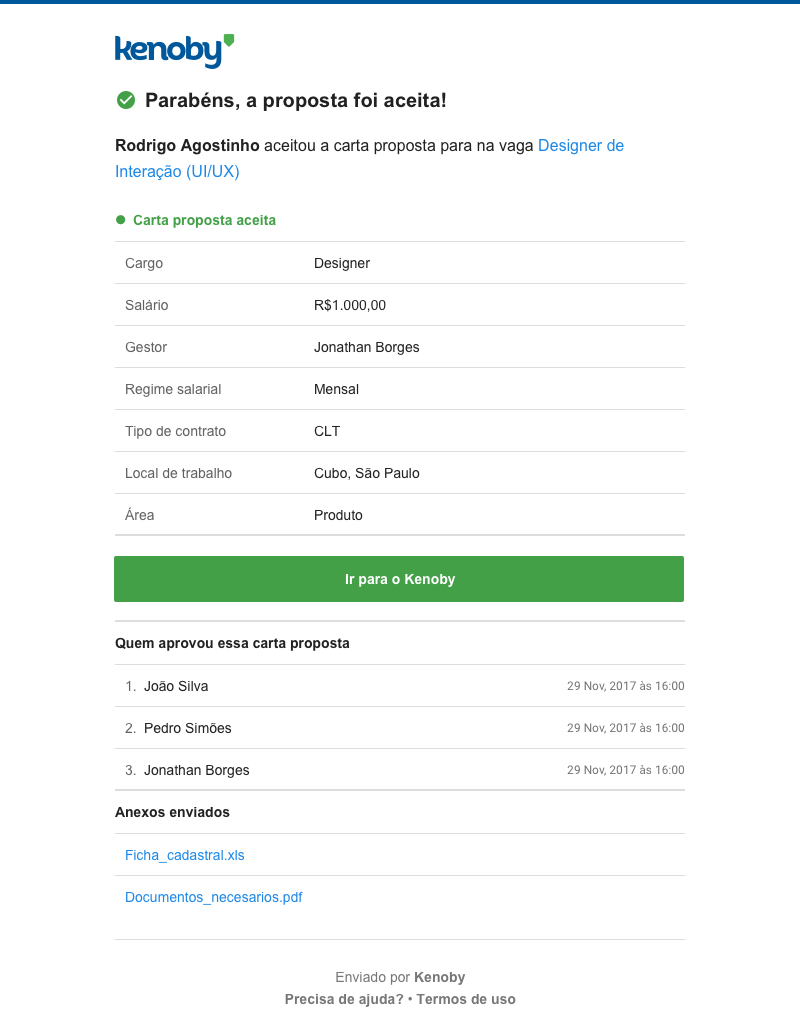
End of hiring process
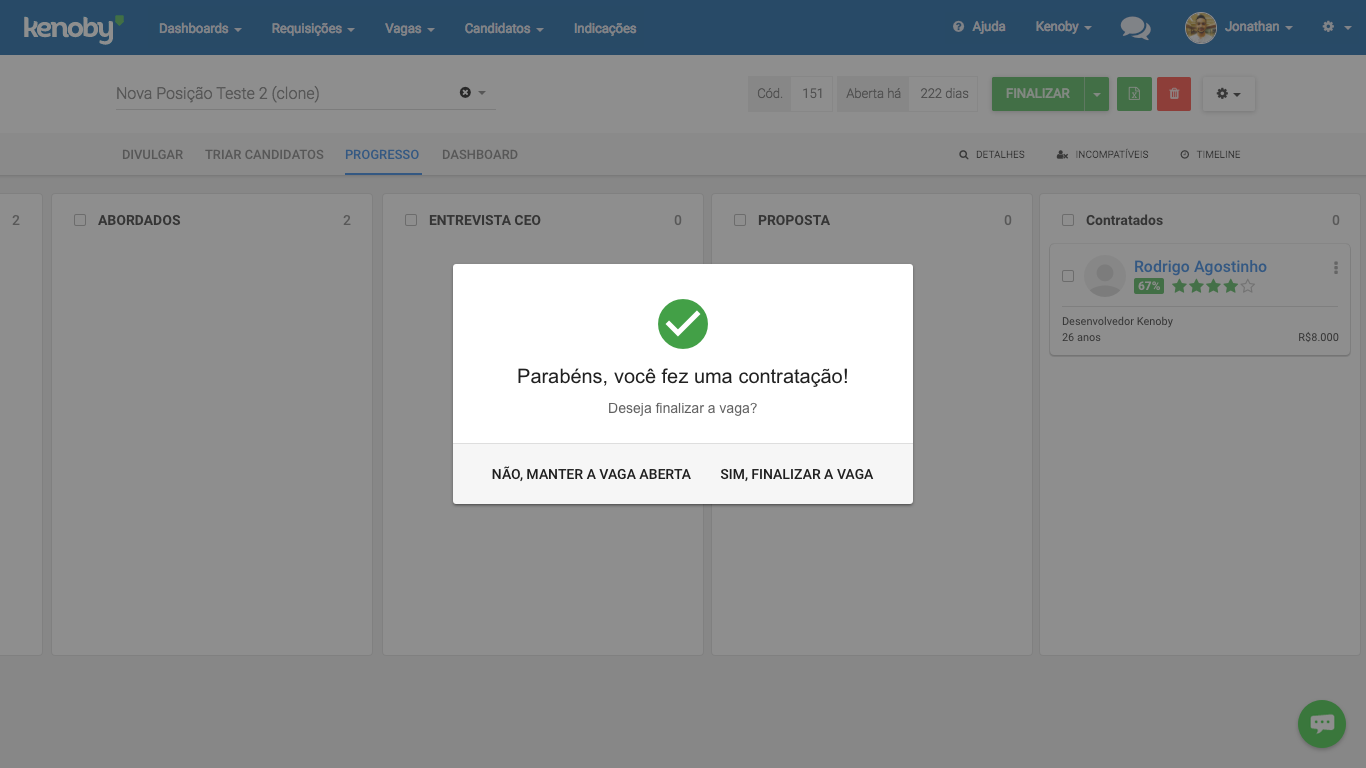
User validation
Based on the same public profile used on research, I validated each step of the feature with all user profiles that interact in the same feature. They are:
• Recruiter / Business partner
• Jobs and Salaries department
• Hiring Manager
• Human Resources department
• Recently hired candidates
The most modified flow was the offer creation and dispatch for budget approval.
Also, several strategies for error prevention were implemented in this interaction.
• Recruiter / Business partner
• Jobs and Salaries department
• Hiring Manager
• Human Resources department
• Recently hired candidates
The most modified flow was the offer creation and dispatch for budget approval.
Also, several strategies for error prevention were implemented in this interaction.
Handoff for development
At the time we did not have multidisciplinary squads as the team was still small. We all worked together as one squad.
I had to develop a documentation containing the design processes, business rules and legislation details to instruct the development team.
Another challenge was that all our developers worked remotely, so we had to have several conference calls until the first version of the feature was released for beta testers.
I had to develop a documentation containing the design processes, business rules and legislation details to instruct the development team.
Another challenge was that all our developers worked remotely, so we had to have several conference calls until the first version of the feature was released for beta testers.
Conclusion
This project was extremely important to showcase the design process value, especially the exploratory research process, which by that time was not implemented by the team in a structured way.
Being able to consolidate complex business rules, legislations, several user interactions with diverse interest levels, has made me grow as a Product Designer and also learn a lot about Kenoby as a business.
One of the biggest lessons learned was the conflict created by delaying the tech team presence while planning and discussing the new feature to better understand the possible technology limitations. This delay resulted in a longer period developing the feature.
Being able to consolidate complex business rules, legislations, several user interactions with diverse interest levels, has made me grow as a Product Designer and also learn a lot about Kenoby as a business.
One of the biggest lessons learned was the conflict created by delaying the tech team presence while planning and discussing the new feature to better understand the possible technology limitations. This delay resulted in a longer period developing the feature.
What I've learned
• Consolidation of complex business rules
• Co-creation with the help of potential users
• Quick prototyping
• Deadline and expectation management
• Co-creation with the help of potential users
• Quick prototyping
• Deadline and expectation management